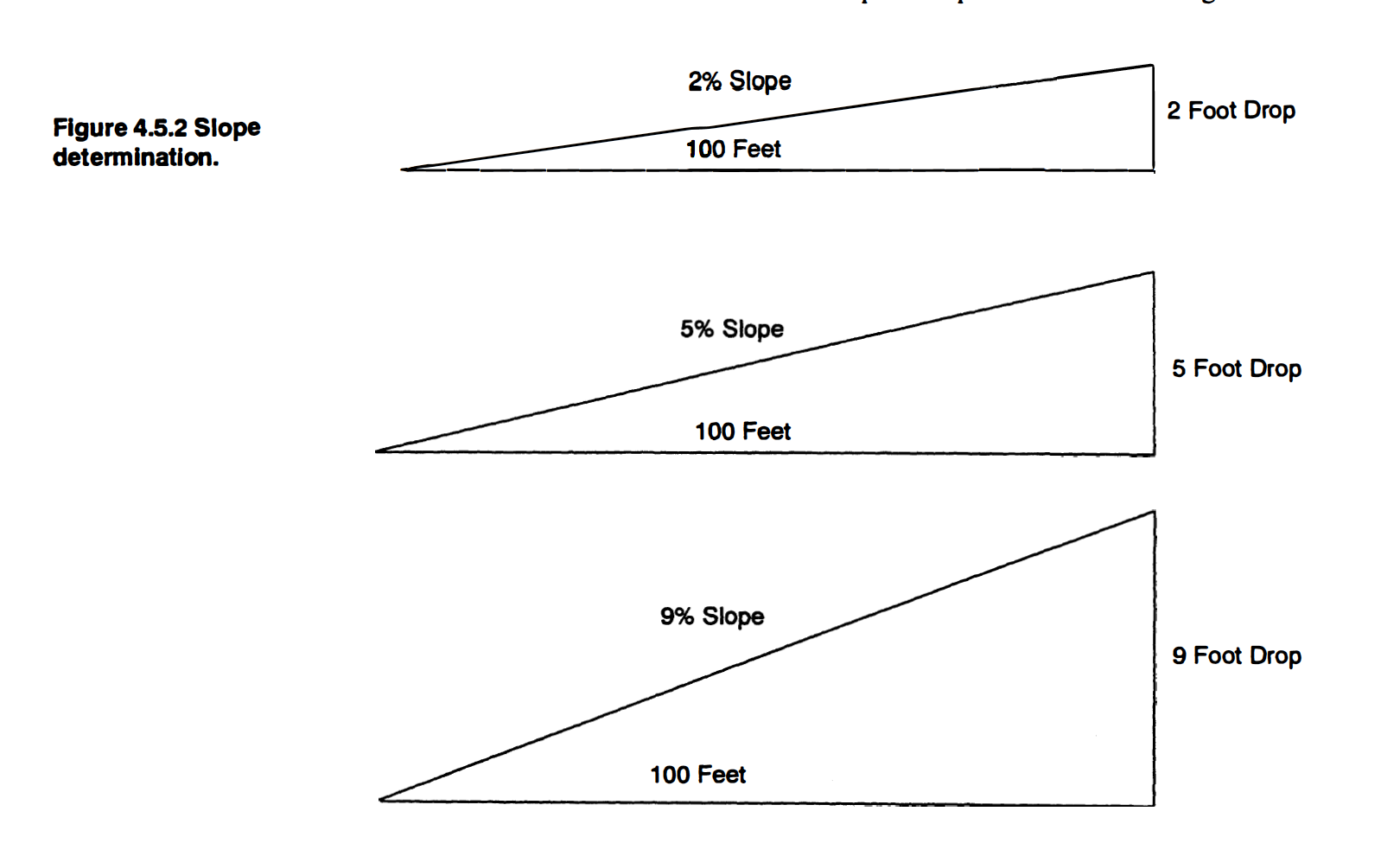Two factors, slope and landscape position, determine whether water will collect at a site or flow away from the site. In general, concave or flat features accumulate water, resulting in wetter soil conditions. Convex sites tend to make water flow away from the site and are typically drier than concave or flat sites. Thus, slope and landscape position are extremely important factors in site evaluation because these factors strongly influence how wet the site is.
Slope also affects the installation of septic systems. It is impossible to operate equipment for system installation on a slope greater than 65%.
When evaluating a site for landscape and slope, the environmental health specialist must locate the best position for the on-site system. To choose the best location, the environmental health specialist must evaluate the property for overall landscape position and for specific features.
Overall topography and landscape position can be determined by walking over the property or standing at a location where the land surfaces can be seen. Those locations that have convex shapes or that have water flowing away from the location so that the soil is drier are the best locations for onsite systems. For example, it is better to install a treatment and disposal field on a ridge top than in a depressional area.
The specific location on the lot should be evaluated for characteristics important to on-site systems. Some factors that should be investigated are:\
What is the slope?
Does water flow to or away from the location?
Are there any depressional areas?
Are the soil depth and restrictive horizons deep enough to install the trench, given the slope?
In evaluating the slope and landscape position, remember that laying out the system includes locating the system components in appropriate locations. For example, although the slope may not be a limiting factor, it may interfere with placement of some trenches due to the available soil depth.
Suitability for placement of conventional on-site systems, as determined by slope, is shown below.
For low-pressure pipe on-site systems, the slope cannot be greater than 10% unless special design procedures are approved to assure proper distribution of effluent over the treatment and disposal field.
Area-fill systems cannot be installed on slopes greater than 15%.
Slope Determination
Slope is determined by measuring the change in elevation over a particular distance. Rods are held at the lowest position and the highest position. A surveyor's level is used to read the rod heights. The difference in these heights is the change in elevation. This change in elevation is then divided by the distance between the two rods. Three examples are presented below in Figure 4.5.2.
Slope Determination
Two landscape positions that are UNSUITABLE for on-site systems are depression and wetlands.
At sites where the landscape position and soil properties cause water to flow over or through the soil at the site of the treatment and disposal field, the local health department may direct the use of landscaping, surface diversions, or ground water interceptors to reduce the surface or subsurface water flow.
From the North Carolina Onsite Guidance Manual




